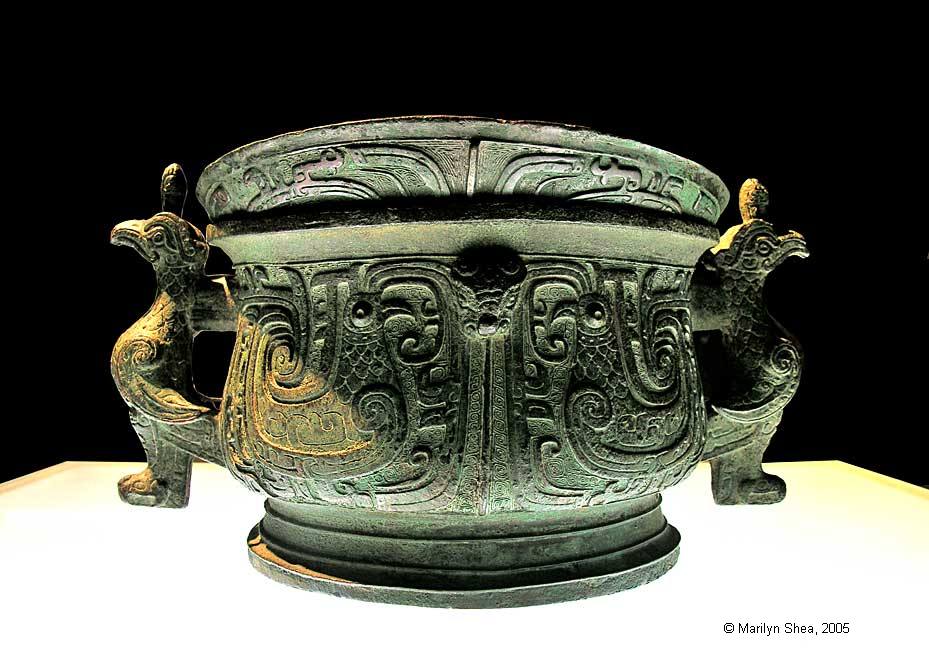 |
| This vessel called a 簋 guǐ measures 8.25 inches (21 centimeters) and weighs 11 pounds (5 kilograms). It was used for serving food. The body is decorated with bird of paradise 风鸟 (fēngniǎo) designs and the pattern is repeated in three dimensions on the handles or ears. Inside the top and on on the inside of the bottom there are 134 characters. The inscriptions in the bottoms of containers, on the surface of bronze pots, and on other metal artifacts were one way of recording history during the period.
The characters describe a battle General Dong (Dong Shuai You Si) fought against the Rong in January and this vessel commemorates his victory. The Rong were a people who lived in the north of China who were considered barbarians by the Chinese. During the Spring and Autumn Period (777 BC to 476 BC), the State of Jin (晋), in the north, fought territorial battles with various tribes of the Rong (戎族). There was quite a bit of intermarriage among the rulers of Jin and the Rong tribes, especially during times of peace. The borders were not fixed and people passed freely. Thus, at one point Prince Chonger of Jin took refuge with the Rong because his mother was from one of the tribes and they would protect him. The State of Jin was one of the larger states during the Spring and Autumn Period. It included most of Shaanxi and extend west to the border of the State of Qin. On the east it extended to southern Hebei and up to the lands of the Di tribes (翟族) in the north. The Di were part of the Rong culture. The gui was found in 1975 in Zhuangbai Village, Fufengxian County, Baoji. Shaanxi. |
http://hua.umf.maine.edu/China/xian2.html
Last
update: March 2010
© Marilyn Shea, 2010